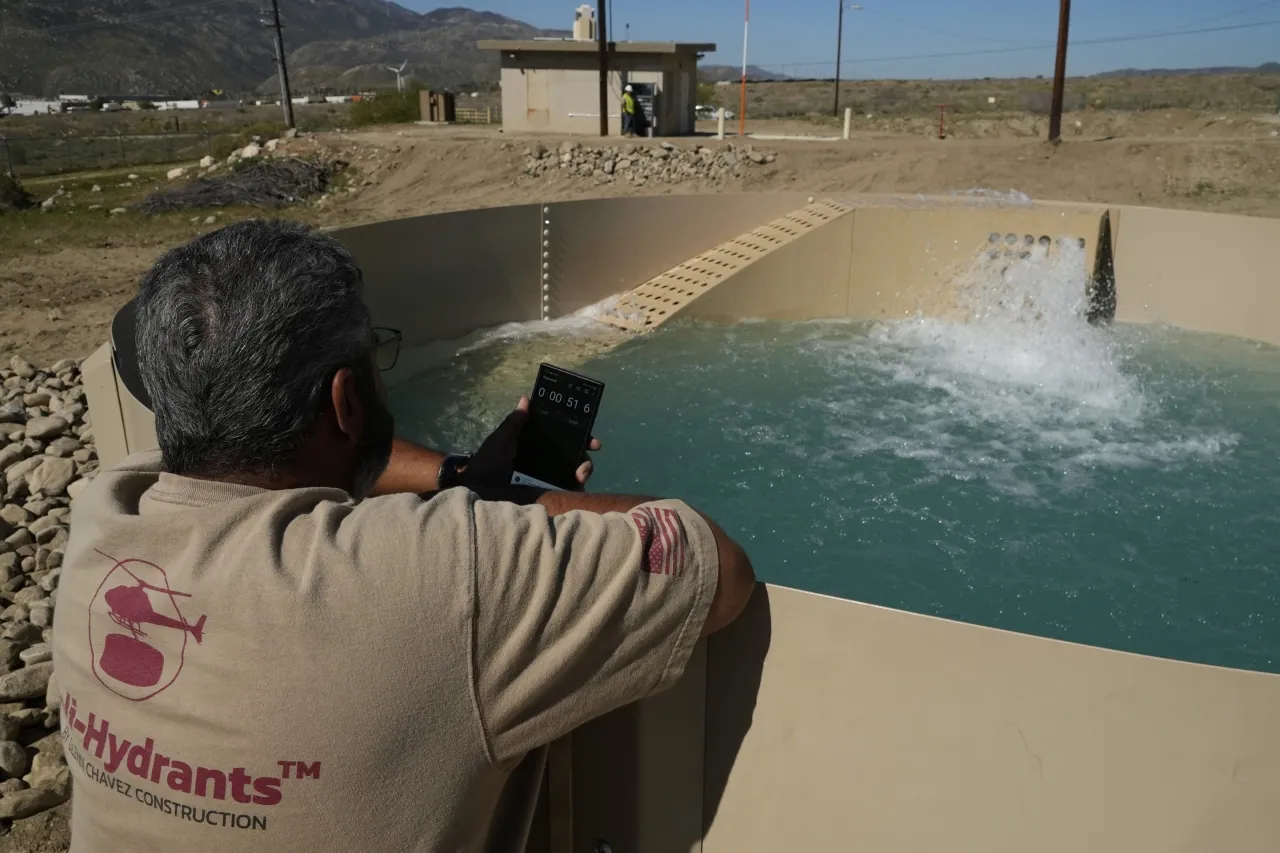A Firefighter’s Frustration Sparked an Idea: Meet the Heli-Hydrant Introduction
In the fast-moving world of emergency response, time is everything — especially for firefighters battling raging wildfires. Every second counts. For one California firefighter, the precious minutes spent scrambling for a water source became the spark for a groundbreaking innovation: the Heli-Hydrant — a smart, stationary water supply system designed specifically for helicopters.
Born from necessity and frustration, the Heli-Hydrant represents a new era in aerial firefighting, offering speed, accessibility, and efficiency in places where wildfires often outpace human response.
The Challenge: Wildfires Are Outrunning Firefighters
California and other wildfire-prone regions have witnessed increasingly intense fire seasons in recent years, exacerbated by climate change, drought, and urban expansion into forested areas. Aerial firefighting — where helicopters scoop or drop water onto fires — has become a critical component of the response arsenal.
But there’s a major bottleneck: water access.
Traditional Firefighting Limitations: Limited water sources: In remote or mountainous regions, rivers, lakes, or reservoirs may be too far or too shallow. Traffic congestion: Fire engines carrying water can get stuck in narrow or blocked roads. Delays: Helicopters often have to fly long distances to refill, losing precious minutes.
For one firefighter, this repeated problem was too urgent to ignore — and innovation took flight.
The Spark: From Field Frustration to Innovation
Meet Paul Rossi, a California firefighter with decades of experience in the field. During a particularly chaotic fire response, Rossi watched helicopters circling, searching for a viable water source, while flames moved unchecked.
“I kept thinking — there has to be a better way. Why can’t we bring the water to them?”
That question became the catalyst for the Heli-Hydrant — a remotely controlled, collapsible water tank system designed specifically for helicopter use.
What Is a Heli-Hydrant?
The Heli-Hydrant is a large, collapsible water basin strategically installed in fire-prone areas. Unlike conventional hydrants or lakes, it is elevated and wide enough for helicopters to hover above and refill their buckets quickly and safely.
Key Features: Remote Activation: Fire departments can fill the tank with water using remote controls, preparing it ahead of time. Strategic Placement: Installed in elevated, easily accessible locations near fire-prone zones. Large Capacity: Can hold thousands of gallons of water — ideal for multiple helicopter scoops. Reusable and Refillable: After a fire, the tank can be drained, cleaned, and refilled for the next emergency. How the Heli-Hydrant Works Pre-deployment: Fire agencies identify key fire-risk areas and install Heli-Hydrants ahead of fire season. Remote Filling: When fire risk increases, teams remotely activate and fill the tanks from nearby municipal water systems or reservoirs. Rapid Refill: During a fire, helicopters hover above the Heli-Hydrant and dip their buckets — no flying miles to lakes or slow engine refills required. Post-fire Recovery: Units are cleaned, stored, or left in place for rapid future use. Real-World Impact: Saving Time, Saving Lives
In wildfire situations, time equals containment. With the Heli-Hydrant:
Helicopters can refill in less than 30 seconds. Water travel time is reduced by over 50%, allowing for more frequent drops. Less fuel is burned, saving costs and reducing emissions. Improved coordination between ground and air teams enhances containment success. Case Study: Orange County, California
The Orange County Fire Authority (OCFA) was among the first to test the Heli-Hydrant. In just one season, officials reported:
Faster aerial response times. Higher water drop rates per hour. Increased containment in hard-to-reach areas.
Chief Brian Fennessy described it as “a game-changer in how we fight wildfires from the air.”
Expanding Nationwide
As climate change fuels longer and deadlier fire seasons across the Western U.S., more municipalities are looking to deploy Heli-Hydrants. States like Oregon, Arizona, and Colorado have expressed interest in incorporating the system into their firefighting infrastructure.
Federal agencies and environmental groups are also weighing in, seeing the Heli-Hydrant as a climate-resilient, tech-forward solution to a growing threat.
The Bigger Picture: Innovation in Crisis
The Heli-Hydrant isn’t just a clever gadget — it represents a shift in how we prepare for and respond to environmental disasters. It’s a reminder that frontline workers often have the best insights into practical, life-saving innovations.
By listening to firefighters, investing in smart infrastructure, and prioritizing early preparation, we can turn frustration into future-readiness.
Conclusion: The Future of Firefighting Is Here
The Heli-Hydrant is more than a water tank — it’s a symbol of what happens when experience meets innovation. It shortens response time, improves aerial efficiency, and, most importantly, saves lives and property.
As fire seasons grow longer and deadlier, scalable solutions like the Heli-Hydrant could become standard across fire-prone regions. From a firefighter’s frustration came a revolution in wildfire defense — proof that the best ideas often rise from the heat of the moment.




